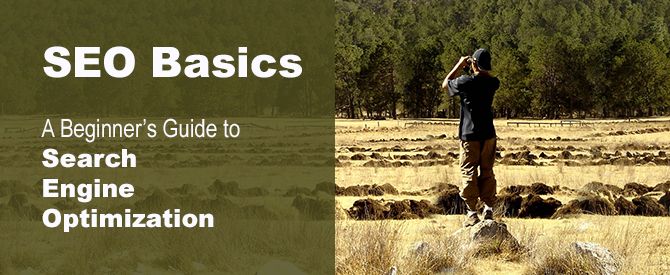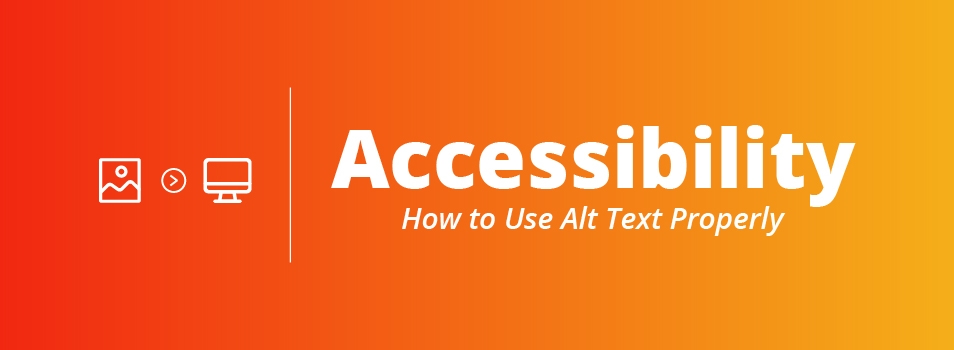SEO Basics Guide For Beginners

By Diane Austin
You’ve got valuable information on your webpages that your audience needs, but they can’t seem to find it. Before you submit a request for a new website design, a blog, and three new social media accounts, try applying some standard SEO techniques.
What is SEO?
SEO stands for Search Engine Optimization, and it is a way of making your web content easier to find. If you apply these SEO basics to your web pages, you’ll instantly be easier to find.
SEO Basics
Gather Your Keywords
Sometimes our institutional language and acronyms do a poor job of describing our services to outsiders. The first step in making your web pages SEO-friendly is to put yourself in the user’s shoes. What do people call the thing or service you offer? Think of all the ways that your website visitors might refer to what you do and use those terms – or keywords – on your page.
Keywords in the Page Title
Put keywords in your page title. The title should be a big signpost to help visitors understand what your page is about. It also helps search engines guide visitors to your page when they search for you.
Keywords in the h1
Put your keywords in the heading 1 – or h1 – at the top of the page. There should always be one and only one h1 on your page. It is often the same or very similar to the page title. Your h2s and h3s – which should be used to further organize and subdivide your page content – should also contain keywords. Users scan webpages looking for information, so putting keywords in headings and subheadings makes them easy to spot.
Keywords in filenames
Before uploading images or PDFs to your webpages, save them with SEO friendly filenames:
- Put the most important keywords at the front of the filename.
- Use hyphens or dashes between words instead of spaces, underscores, or just running words together.
- For PDFs, put revision dates in the document footer or description rather than in the file name.
Keywords in Alt Tags
Put keywords in alternative text or “alt tags” for images. You are using alt tags, aren’t you?
Alt tags help visually impaired users who rely on screen readers to tell them about your webpages. The alt tag should describe the image to someone who can’t see it. Your alt tag can help them “see” the image, but it can also help search engines see that the image is related to your keyword. Look for the link to our SEO Checklist at the end of this post for more details on how and where to add the alt tag.
Keywords in links
For anyone to find your page – including Google and other search engines – you’ll have to add links to it. The link text you use can also help your SEO efforts. There are 275 links on Liberty’s website that say, “click here.” What will visitors find when they click there? Who knows! We do know that website users don’t like “mystery links.” Using the right keywords in your link text helps users follow the “information scent” to what they are looking for. For example, the link text for your internship page could say, “Internship Information” and the link to the internship application could say, “Internship Application” or “Apply for an Internship.”
Example from the Helms School of Government
We recently worked with the Helms School of Government to improve their webpages, including SEO. Here’s an example of how we applied these SEO basic principles to their pages.
Keywords – Potential students are looking for degrees in specific subject areas. They want their education to train them for a career and they may even have one or two specific career paths in mind. The School of Government offers a degree in Criminal Justice with a concentration in Crime Scene Investigation, so we targeted all these keywords:
- Criminal Justice
- Crime Scene Investigator
- Crime Scene Investigation
- Crime Scene Investigation Degree
In addition to improving the Criminal Justice Degree page, we added a page for the concentration in Crime Scene Investigation using keywords in these places:
Page Title – BS in Criminal Justice – Crime Scene Investigation
H1 – Bachelor of Science in Criminal Justice – Crime Scene Investigation
Filename of header photo – BS-in-Criminal-Justice-Crime-Scene-Investigation.jpg
Alt tag for header photo – BS in Criminal Justice – Crime Scene Investigation
Text on the page included the keywords, related terms, and variations of the keywords in the body text – “Crime Scene Investigation degree,” “career in criminal investigation,” “Crime Scene Investigator,” “Crime Scene Photography,” “Crime Scene Management,” and “Criminal Investigations.”
Link text – the link text for the Degree Completion Plan is called “BS in Criminal Justice – Crime Scene Investigation.”
We also added a meta description to the page that appears in search results and includes the keywords and lets the users know the page will explain what the degree offers:
Seeking a BS in Criminal Justice – Crime Scene Investigation? Take a look at what we have to offer at the Helms School of Government.
Try it yourself!
Except for adding the meta description, you can do most of these things yourself. We’ve put together an SEO checklist to guide you and remind you of these basics.
If you need additional help or just want someone to look over your SEO changes, contact me by email or instant message. I’d love to talk to you about your web content and SEO.
 Diane Austin
Diane Austin

